Above Ground Storage Tank Inspection
The Above Ground Storage Tank Inspection article provides you with information about the inspection of storage tanks and storage tank testing in a construction shop and site, as well as storage tank in-service inspection in operating units. You may review storage tank inspection procedure and storage tank ITP articles.
What is the Application of a Storage Tank?
There are two kinds of storage tanks, the Atmospheric Storage Tank and the Low Pressure Storage tank.
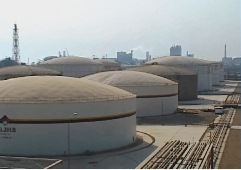
The I4I Academy Online API 653 Aboveground Storage Tank Inspector Course coveres storage tank inspection and testing in the manufacturing process (API 650 -Welded Tanks for Oil Storage - This Code section is part of course syllables) and when it is placed in service.
The maximum pressure for vapor or gas space of an atmospheric storage tank is 2.5 psi, and for a low pressure storage tank is 15 psi.
If the pressure is more than 15 psi, the liquid cannot be stored in in the storage tank and it is necessary to be stored in a pressure vessel.
Atmospheric storage tanks are used for storing crude oil, heavy oil, gas oils, furnace oils, naphtha, gasoline, non-volatile chemicals, etc.
Low pressure storage tank are used for storing light crude oil, some gasoline blending stock, light naphtha, pentane, some volatile chemicals, liquid oxygen, liquid nitrogen, etc.
The physical shape of both kinds of above stated storage tanks might be similar, but the construction code and design and inspection requirements are different.
What are the Above Ground Storage Tank Inspection Requirements in the Manufacturer Shop and at the field?
The construction code for the atmospheric storage tank is API STD 650, and for a low pressure storage tank is API STD 620. These cover the minimum requirements for design, materials, fabrication, inspection and testing.
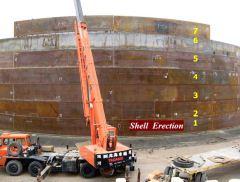
With the above explanation, your inspection and test plan (ITP) for storage tank construction needs to meet the requirements of either API STD 650 or API 620.
The storage tank inspection and test plan summarize all inspection requirements in several pages and in tabular format.
The storage tank inspection and test plan is prepared in two sections, one for the supply, cutting, rolling and beveling of storage tank plates in the manufacturer's shop, and the other section for construction activities in the field.
The prepared plates in the shop are transferred to the field for assembly. Depending on the client's contract, sometimes there is only one contractor for shop and field activities, and sometimes there are two contractors one for the shop and one for field assembly.

This table determines each party's responsibility (i.e. construction contractor, third party inspector and client).
For more detailed information on above ground storage tank inspection both on in-shop and on-site review the following articles:
Third Party Inspection for Storage Tank
Inspection and Test Plan for Storage Tank
What are the Above Ground Storage Tank Inspection Requirements in Operating Plants?
The In-Service Inspection code for your atmospheric storage tank is API STD 653. The content in this standard covers tank inspection, repair, alteration and reconstruction.
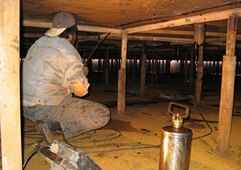
It is necessary for you to use this standard with the API Recommended Practice 575, which is titled “Guidelines and Methods for Inspection of Existing Atmospheric and Low-pressure Storage Tanks.”
As you see above, the API STD 653 addresses only the atmospheric storage tank, but API RP 575 covers both atmospheric and low pressure storage tanks.
The API STD 653 is designated for atmospheric above ground storage tank inspection, for tank built based on API 650, but you may use this code for any steel tank with specific consideration and operating details.
Some other recommendation practices that you need to take into account in your above ground storage tank inspection are API RP 651 for tank bottom plates cathodic protection system, API RP 652 for tank internal lining system, API RP 571 for damage mechanism, and API 577 for welding inspection and metallurgy. Many of the design, welding, examination, and material requirements of API 650 can be applied in the maintenance inspection, rating, repair, and alteration of in-service tanks.
But if you found a conflict between the construction code API 650 and API 653, the requirement of API 653 must govern this standard, as it -specifically addresses above ground storage tank inspections for operating plants.
API 653 above ground storage tank inspectors are qualified for the inspection of storage tanks, as they are certified by API for such activities.
What are Important Points in the Above Ground Storage Tank Inspection in shutdown?
For detailed information you need to refer to API STD 653 and API RP 575.
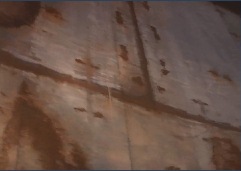
Internal Inspection-Shell Plate
- Shell plate inspection for corrosion and deformation
- Shell plate circumferential and longitudinal welding joints inspection for corrosion and cracking
- Internal coating inspection (if any)
Internal Inspection- Bottom Plate
- Thickness measurement and remaining life calculation on bottom plates and annular plates
- Bottom plates and annular plates inspection for corrosion and deformation
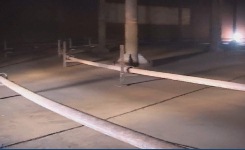
- Bottom plates and annular plates welding joints inspection for corrosion and cracking specifically the annular plate joints with first shell course plate
- Sump inspection
- Internal coating inspection (if any)
- Inspection of sample plate, which must be cut to find any external corrosion
- Vacuum testing inspection and supervision
Internal Inspection-Fix Roof
- Roof plate inspection for corrosion and deformation
- Roof structure members inspection for corrosion and deformation
- Roof plates and structure members welding joints inspection for corrosion and cracking
- Internal coating inspection (if any)
Internal Inspection-Floating Roof
- Roof plate inspection for corrosion and deformation
- Roof structure members inspection for corrosion and deformation
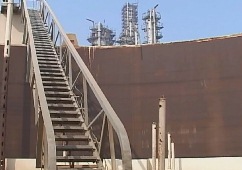
- Roof plates and structure members welding joints inspection for corrosion and cracking
- Roof sealing system inspection i.e. rubber seal, seal plate, etc.
- Roof leg supports inspection
- Pontoon gasoil leak testing
- Internal coating inspection (if any)
- Roof drain system inspection
Internal Inspection-Internal Equipment
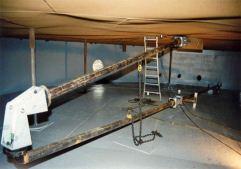
- Gage pole inspection for corrosion and deformation
- Support and structure members inspection for corrosion and deformation
- Inspection of columns for corrosion and deformation
- Fixed coil inspection and test for corrosion
External Inspection-Shell and Roof
- Thickness measurement and remaining life calculation
- Shell and roof plates inspection for corrosion and deformation
- Shell and roof plates circumferential and longitudinal welding joints inspection for corrosion and cracking
- Nozzles, man ways, flange welding joints inspection for corrosion and cracking
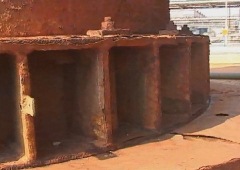
- External part of annular plates inspection, specifically welding joint with shell plates
- Side vents inspection
- Gasket seating surface inspection of nozzles and man ways flange joints
- Top angle, wind girder and stair way inspection for corrosion and deformation
- Roof sump inspection (floating roof only)
- Pontoon and pontoon structure welding joints inspection for corrosion and cracking (floating roof only)
- Weather shield rubber and pontoon doors rubber inspection (floating roof only)
- Pontoon air leak testing (internal floating roof only)
- Painting or insulation inspection
External Inspection-Foundation
- Concrete foundation inspection for corrosion and cracking
- Earthling system inspection
- Asphalt inspection (around shell)
- Cathodic protection system inspection
Free newsletter!
Sign up to receive my monthly newsletter covering all the latest courses and updates.




New! Comments
Have your say about what you just read! Leave me a comment in the box below.